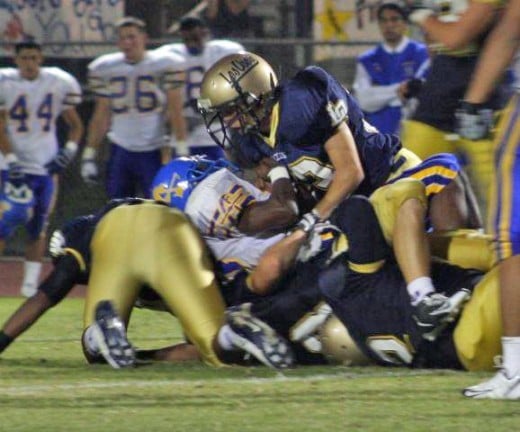Travel Teams Are to Blame for the Decline of High School Soccer and Baseball
Travel Teams are Tops
As high schools are progressively losing top athletes to highly competitive travel teams, some traditional sports may become dinosaurs in the next decade. Fiercely competitive travels teams are on the rise. Coaches demand focused and dedicated athletes. That means athletes are concentrating on one team and one sport, not several. Parents and young athletes, following the dream of college scholarships, are buying into the demands of travel teams in hopes of great reward. There is little time left for the school sports practice. Thus, the talent of the high school teams can also be expected to decline as the better athletes are dwindling in participation.

What? No More Friday Night Football?
Certainly this theory does not apply to all sports. It is hard to imagine high school football games going by the wayside as they are a staple for so many communities. The traditional sport of football seems to be immune from this progression, which is a blessing for cheerleaders and homecoming traditions. The largest high school sports at risk are baseball, soccer and quite possibly, basketball. The number of travel teams for these sports continues to be on the rise. According to Michael Hilton of the Westside Cubs, "Youth Travel Team Baseball has experienced an unprecedented surge in popularity with an estimated growth rate of more than 3000% over the past five years." As kids continue to join the travel teams at younger ages, they are better skilled in the sport than the recreational player. It is only natural for them to continue down this path through high school.
According to the soccer recruiting guidelines of the National Collegiate Scouting Association, the majority of all Division I soccer recruits have Olympic Development Experience (ODE) as well as club experience. In addition, more than 95% of Division II and III soccer players have club experience. Playing for the high school team is not enough. Colleges want you to have tournament experience at the Club Level. For the high school student aspiring to get one of the "golden tickets," there just isn't enough time to devote to the school team when participation on a club team is a requirement to be on a scout's radar.
Club Soccer and Baseball Teams are Big Business
Participating on a travel team can be a huge financial commitment. Some team costs are upwards of $1,000, not including equipment and weekend travel. Multiple this by a few years and the dollar signs will make your eyes hurt. Many parents want to see a return on this investment in terms of college scholarships. College scouts tend to visit tournaments where they can observe many players on their watch lists. High school games may feature only one player to watch, rarely two, if there is even a ranked player on the other team.
Men’s soccer remains among the most difficult sports in which to earn a scholarship. A study, published in July 2009 by College Sports Council, shows there is an average of one Division I scholarship available for every 196 high school soccer players. Factor in that many elite, college-bound players who bypass high school to focus on club soccer, then the ratio becomes even greater for the high school soccer player. Going after the college scholarship is truly for the extraordinary athlete who has committed an exorbitant amount of time and funds playing club sports.
What Do You Think?
Which Sports Do You Think Will Evaporate First from High Schools on a Competitive Level?

AAU Helping Keep High School Basketball Alive
The Amateur Athletic Union (AAU) holds local, state, regional and national tournaments for a multitude of sports. You can get more information at www.aausports.org. AAU is one organization that appears to help foster the continuation of high school sports by several of their organization rules. For example, AAU teams are not supposed to officially practice before a certain date--usually after the high school season is complete. In North Carolina, the NC AAU for boys basketball states the quiet period as November 1 through March 3, 2012. http://www.ncaauboysbasketball.com/rules/61.html This allows the high school basketball player the ability to play on his school team as well as a travel team since the seasons do not overlap.
Letter Jacket or College Scholarship
It is just a matter of time before our competitive young athletes have to decide on when they want to live their glory days--high school or college. If they have the dream of being a college player or beyond they must choose the club team route. We can expect this to result in the loss of some high school competitive sports teams.








